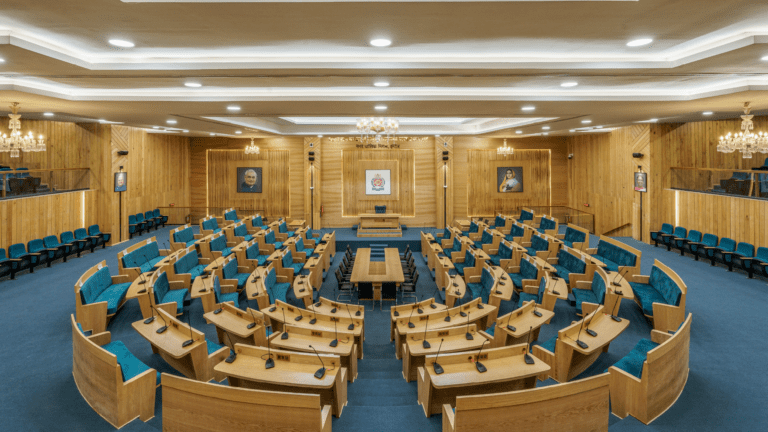On December 15, a Team Canada roundtable and networking reception was held at the Embassy of Canada in Beijing, with participants joining virtually from the Canada Wood office in Shanghai. The event was organized by FII China, Canada Wood and the Canadian Trade Commissioner Service to bring together leading Canadian enterprises in the green building and construction sector to discuss integrated solutions to address China’s climate goals. More than 50 participants attended, representing companies in the building and construction sector, consular officials and provincial government offices.
The Canadian Ambassador to China, H.E. Dominic Barton, gave opening remarks for the event, noting that the construction sector is key to achieving net zero carbon goals and that these climate change issues represent a strong area for cooperation between Canada and China. The roundtable discussion explored opportunities to take a Team Canada-style approach to engagement in the building and construction sector, to see where it might be possible to collaborate in promoting low-carbon building solutions that support China’s carbon reduction goals.
Minister (Commercial) Jean-Christian Brillant delivered remarks highlighting the increasing sophistication in the Chinese market, as well as the opportunities for Canadian companies that commit to a long-term presence. Vice-Consul and Trade Commissioner, Karrolyn Van Helden, emphasized that while policies are important drivers, achieving targets is only possible through collaboration with companies.
During the event, FII China introduced policy trends in the context of China’s decarbonization drive which point to the need for a systematic approach to building a collective brand for Canadian green building solutions. Canada Wood China shared some key lessons learned from building wood-frame demonstration projects in China over the past 15 years. Although the programs have been successful in advancing codes and standards for wood buildings and expanding market capacity for industry professionals, they can be quite complicated and some projects were never completed as different challenges arose at each stage of development.
During the roundtable discussion moderated by Ambassador Barton, representatives of companies shared their experiences and what they have learned through their projects in China. As the industry has become more interested in green technologies and sustainable solutions, participants all agreed on the value of working together and finding ways to integrate products into packaged solutions. One potential opportunity is to integrate green building products and services through new demonstration projects that can present a collective brand of Canadian low-carbon building solutions. Participants raised interest in the possibility of having a platform for Canadian companies to exchange information about projects in the construction sector. There is also the need to help stakeholders better understand the benefits and advantages of Canadian solutions and how they can address local needs in the market.
Climate change is a global challenge. Both Canada and China are faced with the daunting task of reducing emissions and transitioning to a low-carbon economy. Deepening collaborations between Canadian companies active in China through a Team Canada approach could facilitate the exchange of ideas and experiences to advance projects that can help make progress towards zero-carbon goals. Through partnerships and joint programs, both countries can find and build on new solutions to move toward a greener future.



